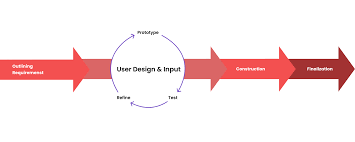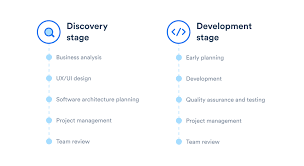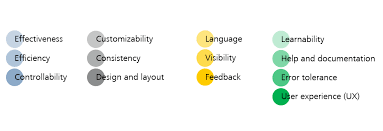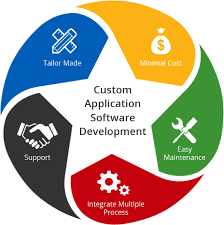Understanding the True Impact of Software Development Costs
The Real Costs of Software Development
Software development is a crucial aspect of any modern business. Whether you’re creating a mobile app, a website, or custom software for your organization, understanding the costs involved is essential for budgeting and planning. The costs of software development can vary significantly depending on various factors.
Factors Affecting Software Development Costs
Several key factors influence the overall cost of software development:
- Scope: The complexity and scope of the project play a significant role in determining costs. Larger projects with more features will generally require more time and resources, resulting in higher costs.
- Technology Stack: The choice of technologies used in development can impact costs. Some technologies may require specialized skills or licenses, which can increase expenses.
- Timeline: Tight deadlines or rushed development schedules can lead to additional costs as developers may need to work overtime or hire additional resources to meet project milestones.
- Team Composition: The size and composition of the development team can affect costs. Hiring experienced developers or specialists may come at a higher price but can also result in faster and more efficient development.
- Maintenance and Support: Ongoing maintenance and support are essential for keeping software running smoothly. Factoring in these costs from the beginning can help avoid unexpected expenses down the line.
Types of Software Development Costs
The costs associated with software development can be broadly categorized into two main types:
- Direct Costs:
- Indirect Costs:
– Labor costs for developers, designers, project managers, etc.
– Software licenses and tools
– Infrastructure and hosting fees
– Training and onboarding expenses
– Opportunity costs due to project delays
– Quality assurance and testing
– Post-launch support and maintenance
Tips for Managing Software Development Costs
To ensure that your software development project stays within budget, consider the following tips:
- Define Clear Requirements: Clearly outline your project requirements to avoid scope creep and unnecessary changes that could drive up costs.
- Prioritize Features: Focus on developing core features first before adding extra functionalities to minimize initial development costs.
- Regular Communication: Maintain open communication with your development team to address any issues promptly and avoid costly misunderstandings.
…
5 Strategies to Effectively Manage and Reduce Software Development Costs
- Plan and estimate the project thoroughly to avoid unexpected costs.
- Consider using open-source tools and libraries to reduce licensing fees.
- Invest in training for your team to increase efficiency and reduce errors.
- Regularly review and optimize your development process to save time and money.
- Prioritize features based on their impact to avoid unnecessary expenses.
Plan and estimate the project thoroughly to avoid unexpected costs.
Planning and estimating the project thoroughly is a crucial tip in managing software development costs effectively. By carefully outlining the project scope, requirements, and timeline upfront, you can identify potential challenges and allocate resources more efficiently. Thorough planning helps in avoiding unexpected costs that may arise due to scope creep, rushed timelines, or inadequate resource allocation. By having a clear roadmap from the start, you can better control expenses and ensure that the project stays on budget.
Consider using open-source tools and libraries to reduce licensing fees.
Consider using open-source tools and libraries as a cost-effective strategy to reduce licensing fees in software development. By leveraging freely available resources, developers can access a wide range of functionalities without incurring additional expenses. Open-source solutions not only help lower upfront costs but also promote collaboration and innovation within the development community. Integrating open-source tools into your projects can lead to significant savings while maintaining high-quality standards in software development.
Invest in training for your team to increase efficiency and reduce errors.
Investing in training for your software development team is a strategic decision that can yield significant benefits. By enhancing the skills and knowledge of your team members, you not only increase their efficiency but also reduce the likelihood of errors in the development process. Well-trained professionals are better equipped to handle complex tasks, adopt best practices, and stay updated on the latest technologies, ultimately leading to higher productivity and improved quality of work. This proactive approach to skill development can result in cost savings by minimizing rework and ensuring that projects are completed more efficiently.
Regularly review and optimize your development process to save time and money.
Regularly reviewing and optimizing your development process is a crucial tip for managing software development costs effectively. By identifying inefficiencies, redundancies, or bottlenecks in your workflow, you can streamline the development process, saving both time and money. Continuous improvement ensures that resources are utilized efficiently and that projects are completed in a timely manner without unnecessary delays or expenses. Embracing a culture of optimization can lead to increased productivity, higher quality deliverables, and ultimately, cost savings for your software development endeavors.
Prioritize features based on their impact to avoid unnecessary expenses.
To effectively manage software development costs, it is crucial to prioritize features based on their impact. By focusing on developing core features that provide the most value to users or address essential business needs first, unnecessary expenses can be avoided. This approach ensures that resources are allocated efficiently and that the project stays within budget while delivering maximum benefit to stakeholders.












